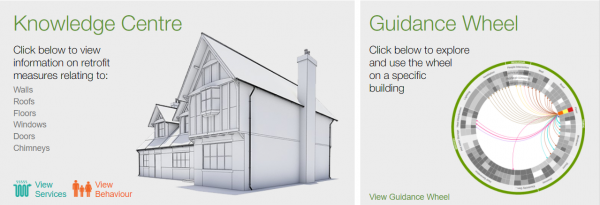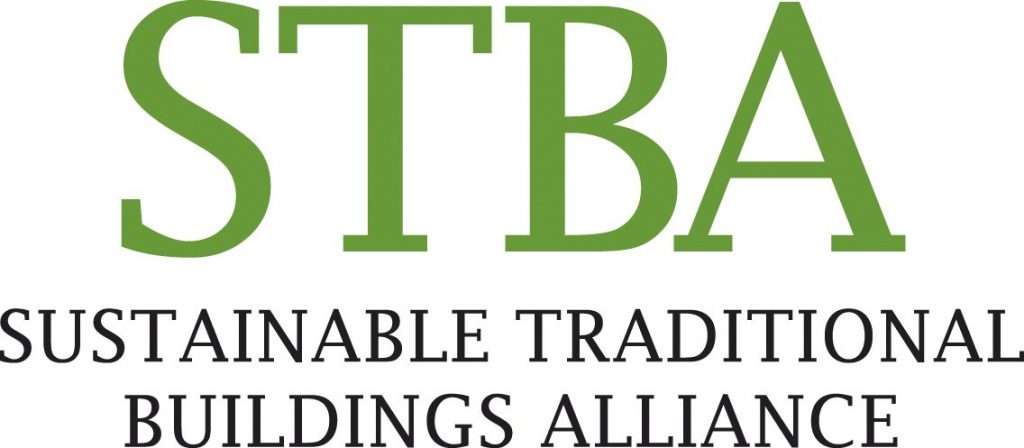STBA Origins
Origins & Development of the STBA
Back in 2011, the government was beginning to promote the Green Deal and there were intentions to “retrofit” the entire building stock in the UK to make it more energy efficient. People who knew about older buildings quickly realised that these lofty ambitions posed a threat to our traditional building stock. Early conversations between Neil May, John Edwards, Rory Cullen, Seamus Hannah, Caroline Rye, Jonathan Garlick, Russell Smith, and others resulted in a decision to set up the STBA.
In 2012 the STBA was formally established – early members included CITB, National Trust, SPAB, English Heritage, Historic Scotland, RIBA, CIAT, RICS, UCL Energy Institute and GHA. A constitution was agreed: the STBA became an independent programme of the Sustainable Development Foundation, controlled by Steering Group with three co-chairs – initially Roger Curtis, Neil May and Sam Allwinkle – representing, Heritage, Sustainability and Industry respectively – the three “pillars of the Alliance”. A set of aims & objectives was also agreed.

Under Neil May’s leadership in 2012 the STBA won backing from DECC to produce the Responsible Retrofit of Traditional Buildings, a report which built on an initial gap analysis backed by CITB and English Heritage. The report analysed the state of existing knowledge in the retrofit of traditional buildings, identified gaps in many areas of understanding, policy, skills & training, and made a series of recommendations to address these issues.
This approach has set the agenda for all our ensuing work, correcting standards where they were inappropriate for traditional buildings, improving policy in this area and providing guidance where it was completely lacking. The report led to significant funding from DECC for the development of an interactive Tool (the Guidance Wheel), and for work on moisture and thermal standards.
In early 2013, Nigel Griffiths joined as the STBA’s Director, which enabled the STBA not only to expand its policy work but also to take its message to a wide range of organisations and events across the UK, ensuring that we became recognised as the knowledge leader in this field. The STBA also co-hosted its first conference, working closely with SPAB to deliver a full day’s programme on energy efficiency, now an annual event.
The same year also marked the beginning of work on training and standards. Directly as a result of our efforts, the Green Deal Provider Guidance included particular provisions to address the needs of traditional buildings. Work also began with CITB on the development of an NVQ level 3 course in the retrofit of traditional buildings.

In 2014, STBA launched the Guidance Wheel, a comprehensive online tool enabling users to explore the links between retrofit measures, understand the connections between fabric, services and building users, and to assess technical risk, heritage impacts and any risks to achieving the intended savings. The Wheel is underpinned by an extensive Knowledge Base of peer-reviewed publications.The project was funded by DECC, inspired by Bill Bordass and delivered principally by Neil May, Isabel Carmona, Adrian Leaman and Caroline Rye, and programmed by Peter Cook.
This was followed in 2015 by a draft Moisture Guidance (now a BSI White Paper), written by Neil May and Chris Sanders, and later that year by Guidance on Solid Wall Insulation produced for the City of Bristol – at that time Europe’s “Green Capital” – again led by Neil May together with our Technical Director Nick Heath. See Research & Guidance.
In 2016 we published a guide to “Planning Responsible Retrofit”, which sets out the basic principles of this approach and explains the key risk factors. This was followed by a short paper on different ways in which the term “Whole House” can be understood in retrofit. 2016 also saw the first series of our 5 half-day Masterclasses on specific retrofit topics, which were presented in London over several months by STBA’s technical experts.
In 2016 John Preston took over from Roger Curtis as Heritage Chair and Peter Draper became our Sustainability Chair. Having led the organisation for a year as CEO, Neil May retired from his executive role.

By 2017 we had achieved much in a short space of time:
- The Responsible Retrofit approach is accepted in parts of BEIS & DCLG, and by Welsh Government
- The “Each Home Counts” Report (2017) advocates a Whole House Approach to domestic retrofit
- STBA’s guidance tools are widely regarded as industry-leading
- The STBA’s work is now recognised internationally
- SAP is due to be revised to reflect traditional buildings better
- A new Standard for retrofit (PAS 2035) is under development
- The BSi White Paper on Moisture in Buildings was published in early 2107 and consequently BS5250 is being completely revised on this basis
Industry had begun to change its approach, though many organisations continue to place profit ahead of long term sustainability.
Perhaps most importantly, and rarely recorded, we have maintained a consistent and agreed approach to the sustainability of traditional buildings, backed by a wide constituency including all the key technical and professional bodies in this field. It is this which enables us to move forward with confidence.

